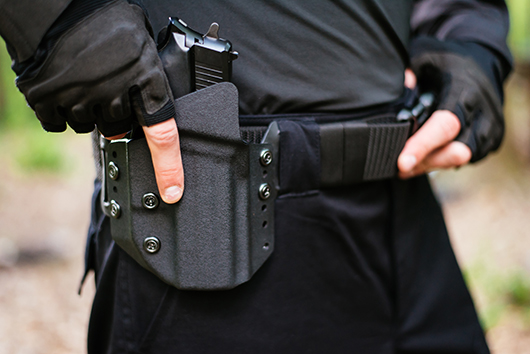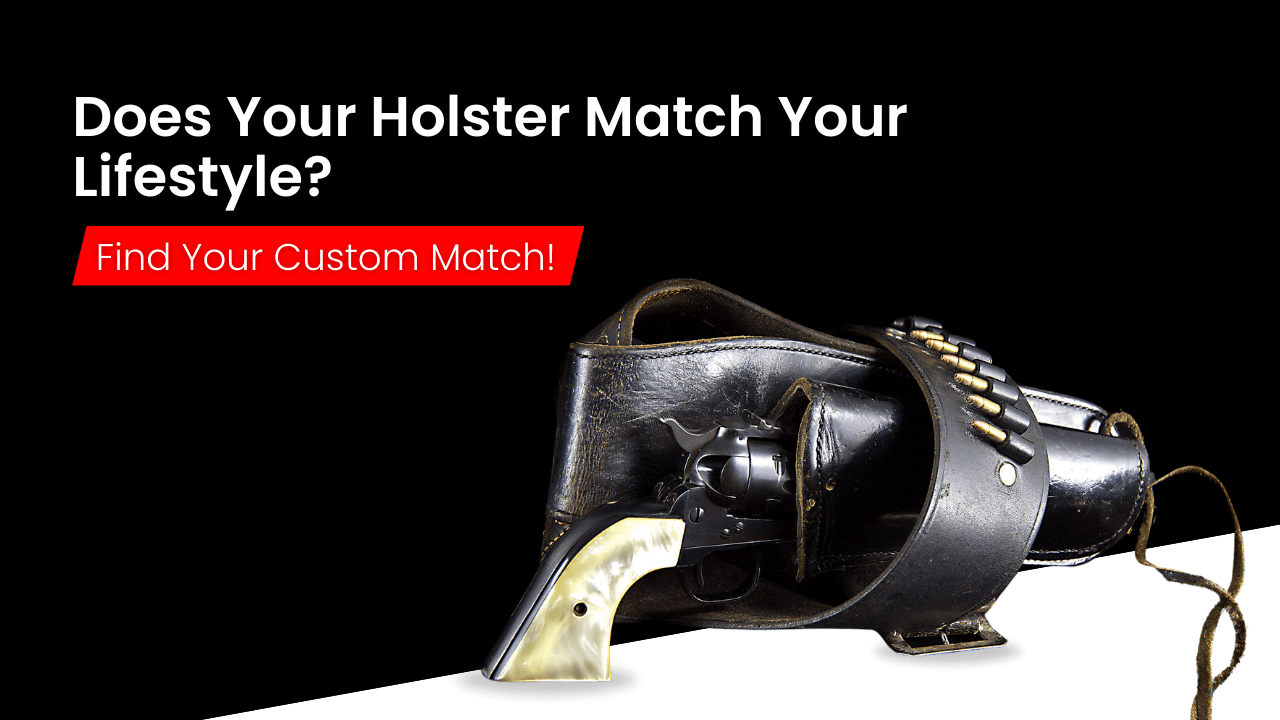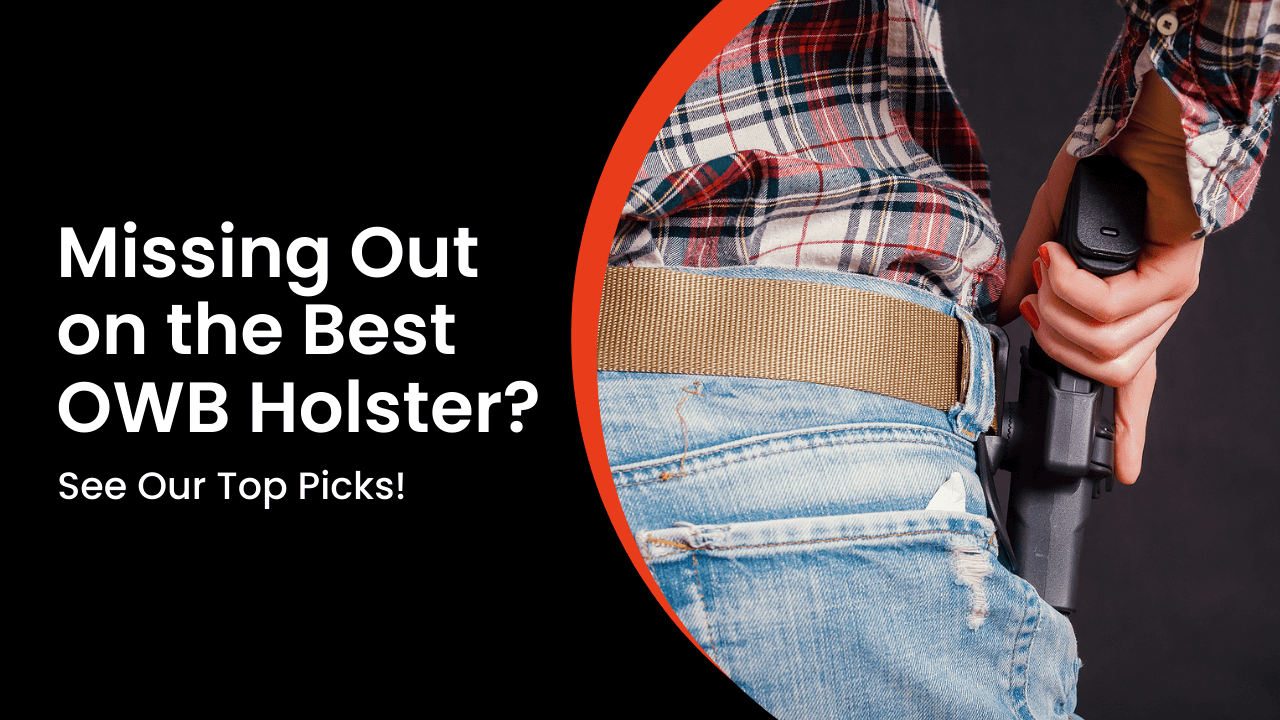Leather vs. Kydex Holsters for Concealed Carry
Nov 27th 2020
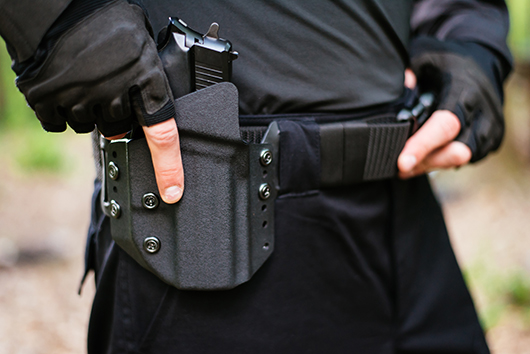
A holster allows you to safely and securely carry a handgun, such as a semi-automatic pistol or revolver, without sacrificing accessibility.
In the context of concealed carry, a holster doesn’t serve the same purpose that a cavalry or field holster does in a military setting. As a result, the holster that you wear can be designed to facilitate rapid deployment.
While there are numerous holster designs to choose from for carrying a concealed handgun, it’s essential to consider the material from which it is made.
When searching for a suitable carry holster, the essential elements to consider are accessibility or speed of draw, retention, safety, comfort, durability, and concealability. Less critical, but still significant, are appearance and customizability.
There are several different holster materials to choose from, but the two that remain the most popular are Kydex and leather.
Kydex vs. Leather Holsters
A durable thermoplastic, this material is used in numerous industrial, military, and tactical applications. Made from an acrylic-polyvinyl chloride composite, Kydex originated in the 1960s. However, it only emerged in the last two decades as a commercially available holster and sheath material.
Made from cowhide, horsehide, suede-like chamois, and other animal hides that have been tanned, dyed, and oiled, leather has been the standard for holsters for centuries. Its use in sheaths and scabbards is even older.
There are also hybrid holsters that combine both Kydex and leather components; however, these holsters tend to experience irregular wear.
Accessibility
Also referred to as the speed of draw, your carry weapon must be available when you need it to be. If you’re carrying a gun for self-defense, nothing should slow retrieval and deployment. While both materials can provide a fast draw, Kydex’s low-friction texture lends itself to smooth draw strokes.
Retention
One of the primary purposes served by a holster is to keep your gun secure under rigorous use conditions. It must maintain the grip at an appropriate angle to be efficiently drawn and prevent the gun from moving freely or falling out.
While leather holsters often rely on a retention mechanism, such as a thumb break, Kydex holsters are custom-molded to fit a particular firearm. This dramatically enhances retention — as soon as you holster your pistol, you’ll notice a positive snap as it clicks into place. If you need to adjust the retention, however, some screws allow that.
Part of retention is keeping the holster securely fastened to your gun belt. To do this with a Kydex holster, you can choose either one or more belt clips or belt loops. A dual arrangement is usually preferred because it more securely anchors the holster, distributing the weight over a wider area. This is also often more comfortable.
Safety
A holster should cover the trigger guard to ensure that your index finger remains straight alongside the frame of the pistol as you’re drawing it. However, while essential, that’s more a function of holster design than material.
Where Kydex does excel relative to leather is in maintaining its shape. If the mouth of a leather holster deforms, it may interfere with holstering your weapon. This may be due to its starting pliability, the absorption of moisture, or wear. Depending on your choice of firearm, it may also increase the risk of an unintentional discharge.
This can happen when, for example, holster material enters the trigger guard as you’re reholstering the pistol, applying downward pressure. Being both water-resistant and more rigid, Kydex is less likely to deform in this manner than leather.
When carrying a handgun in an appendix holster located at the 1-o’clock position, the consequences of an unintentional discharge are magnified. The emphasis on rigidity is especially important.
However, returning the pistol to its holster should be performed as a careful, deliberate action. Reholstering rarely needs to be performed rapidly.
Another safety concern regarding soft, pliable holsters is that the mouth may have to be opened using the support hand to reholster the pistol. This raises the risk that you may cover your support hand with the muzzle.
The conclusion here is that Kydex offers several advantages over leather holsters to keep you and others safe when you draw and holster your weapon.
Durability
While leather is undoubtedly durable in its best examples, Kydex is inherently more resistant to moisture, abrasion, chemical solvents, and oils. Kydex also does not absorb water and swell. A Kydex holster can last you a lifetime with proper cleaning and care, whereas a leather holster may last 5-10 years with regular wear.
Comfort
This is a matter of personal preference and depends on your preferred method of carry, among other factors. Leather is prized for its comfort, especially in its softer variations, but this comes at the expense of reduced rigidity.
Furthermore, if you’ll be carrying your handgun for an extended period, especially outside, Kydex is more forgiving when you sweat. While leather can become wet and often retain that moisture, Kydex won’t. Kydex is also more comfortable against bare skin, gliding off rather than sticking.
However, comfort isn’t limited to the physical, and your peace of mind at knowing that your holster won’t wear out or lose its shape is worth it too.
Concealability
Whether you’re wearing an OWB holster or an IWB holster, concealability is one of your highest priorities if you’re opting for discretion. Kydex holsters are flat, and this slim, custom-molded design can be very low profile.
Softer leather may print less through clothing, although whether that’s worth the reducing rigidity is for you to decide.
Appearance
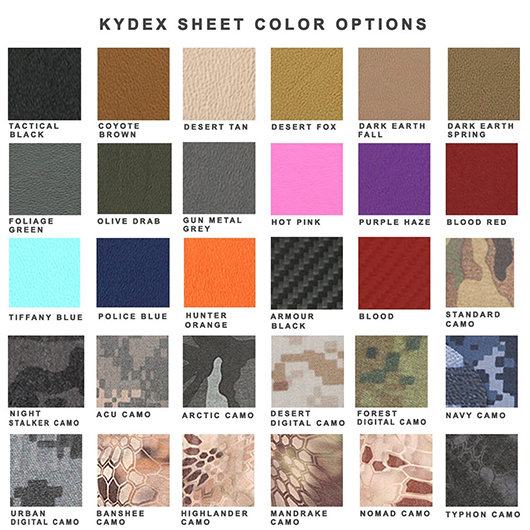
While leather offers that classic look, black Kydex has that modern, tactical appeal. However, when you purchase a Kydex holster, you’re not limited to black — that’s only the standard option. Kydex holsters are available in dozens of aesthetically pleasing colors and patterns to suit your taste and clothing style.
Customizability
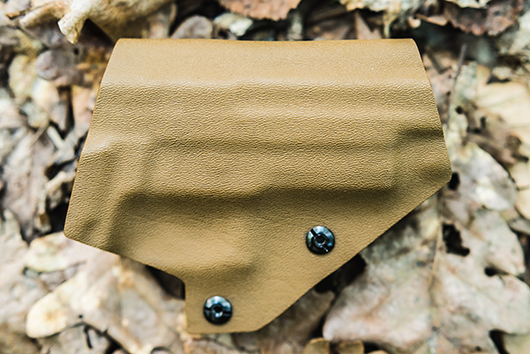
It may not be immediately obvious which material is the winner in this department. Kydex, a polymer composite, is thermoformed to the particular firearm’s external contours and protrusions, providing a custom fit. Leather holsters, on the other hand, are often made to fit a specific firearm by being hand-molded.
Kydex holsters are generally less expensive than high-quality leather holsters while offering a more uniform, glove-like fit due to their thermoforming nature. As a result, Kydex is increasingly becoming the default choice for everyday carry.
{ "@context": "https://schema.org", "@type": "BlogPosting", "mainEntityOfPage": { "@type": "WebPage", "@id": "https://www.incognitoconcealment.com/blog/leather-vs-kydex-holsters-concealed-carry" }, "headline": "Leather vs. Kydex Holsters for Concealed Carry Weapon (CCW)", "description": "Holsters are made from various materials, but Kydex thermoformed plastic and classic leather are the two most used. To buy best CCW holsters visit us now!", "image": "https://www.incognitoconcealment.com/product_images/uploaded_images/bigstock-the-guy-puts-the-gun-in-the-ho-271613230.jpg", "author": { "@type": "Organization", "name": "" }, "publisher": { "@type": "Organization", "name": "", "logo": { "@type": "ImageObject", "url": "" } }, "datePublished": "2020-11-27" }

